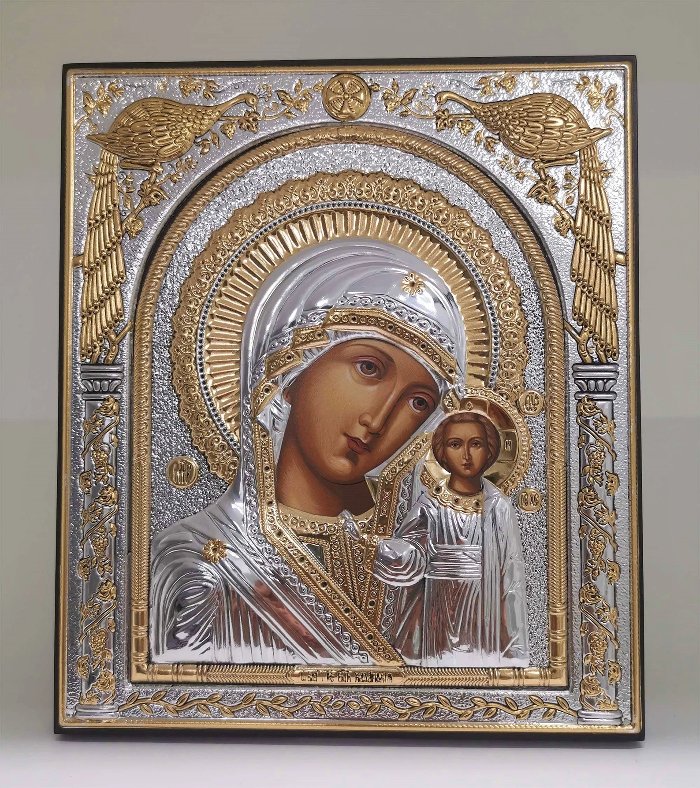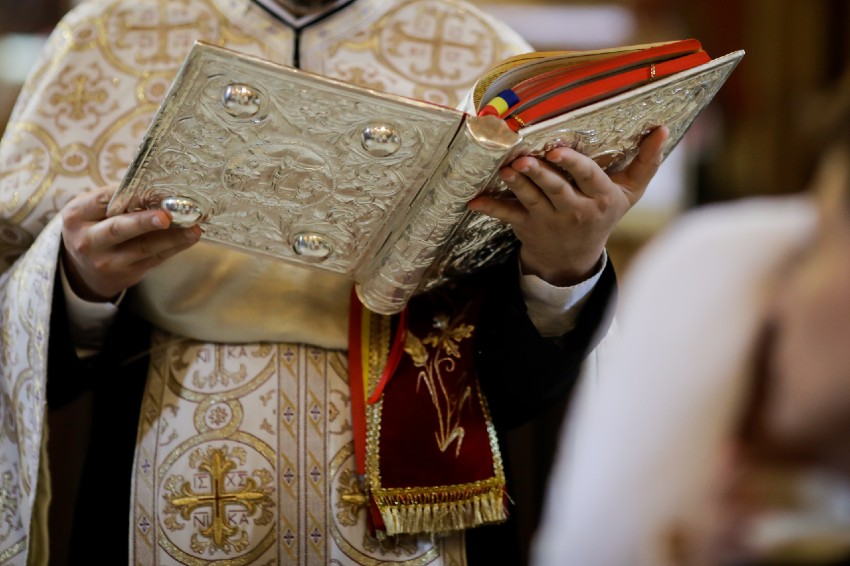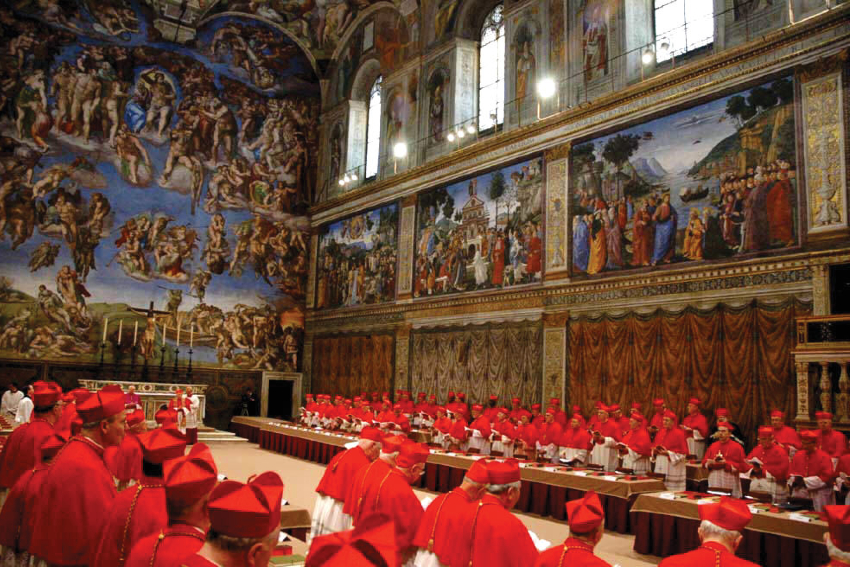
Photo Credit: Christian Icon Store
An image of the icon of Our Lady of Kazan, known popularly in Russia as “the protection of Russia.” July 21 (yesterday) was the Feast Day of Our Lady of Kazan, commemorating the finding of the icon in 1579 in Kazan.
A reader just wrote to me: “Robert… I just purchased this image of Our Lady of Kazan from Etsy (link) [an internet shopping website]! She definitely is watching over our family during these terrible times.” —Amy
“We all have a propensity to sin, which sin depends on a multitude of temptations and human weakness. (Blame Adam and Eve.) That fact does not normalize the propensity or the sin.” —Letter from Dr. M. J. Ferrari, M.D., M.C.L., a reader
Letter #92, 2022, Friday, July 22: Friday Wrap-up
The Pope is about to begin his 37th Apostolic Journey, this time for a week in Canada, landing in the country on Sunday, July 24 (link).
Francis visited the Basilica of St. Mary Major in Rome at 10 a.m. this morning, and prayed before the ancient icon of Mary kept there (tradition holds that it was painted, or “written,” by St. Luke himself), the Salus Populi Romani, as he has done before each one of his trips.
***
Other trips and appointments
Then, there are reports that Francis will endeavor to make a trip to Ukraine as early as August, his health permitting. (link)
There will be consistory in Rome on August 27 to create 21 new cardinals, and then, on August 28, the Pope will travel to Aquila in central Italy and pray at the tomb of St. Celestine V.
It has also been announced that Francis will visit Assisi on September 24 to be present at an “Economy of Francesco” event, and to Matera in southern Italy on September 25, in connection with Italy’s 27th national Eucharistic congress. (link)
Moreover, it has been announced that all of the Italian bishops have been invited to come to Assisi, Italy, on October 4, Feast of St. Francis, to pray for Italy — which will have special national elections on September 25 — and for world peace.
“Next October 4, the feast of St. Francis of Assisi, patron saint of Italy, the Italian Episcopal Conference was invited to make the gesture of offering oil for the votive lamp on the tomb of the Saint,” the president of the Italian Bishops’ Conference, Card. Matteo Zuppi, said in a statement on the social and political situation of the country in view of the elections on September 25th. “It will be a moment of gratitude for those who are helping the Italian people to cope with the effects of the pandemic. It will also be an occasion for a special prayer for Italy and for peace.” (link)
Note: If anyone would like to contribute to support this free Letter, please consider making even a small gift… Many of my readers are sending $10 or more and some are making their gift each month. Your help would assist me greatly. Thank you.—Robert
This week brought into focus two areas of intense division in our Church:
1) the Church’s liturgy, the way the Mass is celebrated — this week saw news of a new crackdown on the old liturgy by Cardinal Cupich in Chicago, with a powerful denunciation of the crackdown by Archbishop Viganò. (link).
Note: We have just learned that the archbishop of Washington, D.C., today issued his new policy for the celebration of the old liturgy in Washington; see below.
2) sexual morality — with Rome expressing concern about Germany’s “synodal path” and its opening toward homosexuality, and members of the Church in Germany expressing irritation at Rome’s public way of expressing this concern.
***
Note: We learned today that the cardinal archbishop of Washington, D.C., Wilton Gregory, has issued his new policy for the celebration of the old liturgy in Washington. (See here for a complete story from The Pillar.)
The decree provides for only three locations in the Washington archdiocese where Masses in the Extraordinary Form (the old Latin Mass) may be offered:
1) the Franciscan Monastery of the Holy Land in Washington, D.C.
2) the chapel at St. John the Evangelist in Forest Glen, a Washington suburb, and
3) the mission church of St. Dominic in Aquasco, Maryland, in the southern part of the state.
The old Mass will no longer be permitted at old St. Mary’s, at 727 5th St., a church founded by Washington’s German community in 1845 that had a vibrant tradition of Mass in the old rite in recent decades. (I myself occasionally attended Mass there, meeting people like Pat Buchanan and Tom and Donna Bethell.)
The new policy also requires priests who want permission to say the old Mass to affirm, in writing, “the validity and legitimacy of the liturgical reform dictated by the Second Vatican Council and the Magisterium of the Supreme Pontiffs.” Also among the provisions of the seven-page document is Cardinal Gregory’s requirement that the clergy of Washington to ask his permission if they wish to say the Ordinary Form of the liturgy ad orientem.
The Pillar‘s tireless Ed Condon wrote today (link):
“One thing I found noteworthy: While the policy was, according to Gregory’s accompanying letter, developed with “input from the faithful who celebrate the Mass according to the liturgical books issued prior to 1970,” the policy text itself bears a striking resemblance to the norms issued by Cardinal Cupich of Chicago.
“Paragraph 5 of the Washington policy, for example, appears almost identical to paragraph 6 of the Chicago policy for a stretch of some 100 words.
“It’s possible that other sections were written with input from D.C. Catholics.
“Or, I suppose, it’s possible that the local faithful of the two archdioceses helped their shepherds arrive separately at near identical conclusions. If so, it’s a remarkable occurrence. Perhaps this is what synodality in action looks like.”
So Condon is saying that he has found evidence suggesting that there was coordination between bishops in different dioceses in deciding what language to use in publishing these policies, that is, that the decisions are being taken with some sort of joint coordination, reflected in the choice of language used in the various diocesan decrees.
***
In earlier letters this week, I offered my own “modest proposal” to keep full and faithful contact with our liturgical heritage by permitting the celebration of the old Latin Mass in translation — something which one would think no Catholic leader would oppose.
I further expressed my conviction that we ought to do all we possibly can to keep our unity, arguing that, if unity is lost, the inevitable result will be a fracturing of the Church into splinter groups, something very harmful for the Church’s mission and witness in our time, and in time to come.
Still, I did not suggest that we should embrace a false unity at the price of setting aside doctrinal truth.
I received a number of letters in response to my emails. Here below I publish several of them.
***
Letter #1:
Robert,
I fully agree with your “Modest [liturgical] Proposal” and have thought the same for years.
I am sure you are familiar with “The English Missal” (altar edition subtitled “Missale anglicanum”) published by W. Knott & Son Limited, thus sometimes referred to as “The Knott Missal”.
It is simply a direct, albeit in Elizabethan English, translation of the complete Missale romanum, including rubrics.
The literal translation into English could be easily updated.
I once showed my copy to a traditional Roman seminarian and his response says it all: “Oh, that’s what the Vatican II Fathers really wanted.”
—Kurt
Letter #2:
Hi Bob,
I’m 83 years old and remember the old Mass well; having been both a Choir Boy and an Altar Boy.
Forgive me; but, I would disagree with you regarding your suggested version of the Mass. It appears to me to be a compromise and I don’t believe in compromising with the Devil (not that I am without more faults of my own).
What a beautiful Mass we would be able to offer to God if we took the pre-Vatican II Mass and implemented the changes that Sacrosanctum Councilium called for!
The “Readings/Propers” be read in the vernacular; the Ordinary parts in Latin (Greek for the Kyrie) and chanted by everyone (since they are the same in every Mass; the laity will eventually learn them), encourage everyone to have a missal to be able to properly follow the Mass.
Eliminate all the hymns and allow some silence between the chants.
As feasible, bring back altars and Communion rails, etc.
We should always offer our best efforts to Jesus.
God bless,
—Frank
“The more you learn; the more that you learn there is to learn.”
Letter #3:
We all have a propensity to sin, which sin depends on a multitude of temptations and human weakness. (Blame Adam and Eve.)
That fact does not normalize the propensity or the sin.
Those with a propensity to the sins of the flesh (including the acts invoked by homosexuality which are not normal — God made them male and female, not in-between — have to pray and fast (some devils are cast out only by fasting) to overcome that temptation. What is difficult to understand about that? Who said that getting to Heaven was easy? (You may want to refresh your memory about the definition of ‘normal’.)
We have to live so that our deathbed memories are not horrors, and so that — ultimately — we do not end up in the fiery pit. Which most people do, apparently.
You have my permission to propagate this.
—M. J. Ferrari, M.D., M.C.L.
Letter #4:
For nine years Francis paved the road for these lunatics in Germany. Now, they’ve taken it, and suddenly he’s the great defender of faith and unity.
I pray you understand this guy’s modus operandi: two evil steps forward + one contrived good step back = a steady progression in one direction.
—J La Victoire
Letter #5:
Dear Robert M,
Neither catechism, Synod nor the German apostates can change what Scripture has stated:
God gave them over to shameful lusts. Even their women exchanged natural sexual relations for unnatural ones. In the same way the men also abandoned natural relations with women and were inflamed with lust for one another. Men committed shameful acts with other men, and received in themselves the due penalty for their error. Romans 1:26
By way of excuse, it is said that Jesus Himself never explicitly condemned homosexuality. But God’s wrath for these “shameful acts” is still visible today, after millennia have passed.
AMDG,
—Robert B
Letter #6:
Terrible what is happening in the Catholic Church in Germany. The “synodal path” leads directly to a schismatic “German-Catholic Church.”
—Manfred Böhm, Germany
Letter #7:
Dear Robert,
If my scripture memory still serves me, our Lord Jesus Christ said that He came to divide (Matthew, Chapter 10 and Luke, Chapter 12; especially) by virtue of His message and nowhere do I remember Him saying that He came to unite.
We suffer so much angst over the disunity we are witnessing that we are willing to try any compromise that is HUMANLY possible, but not, maybe, DIVINELY inspired.
A few months ago, you printed Pope Pius V’s Papal Bull Quo Primum, which spoke of the wrath of Almighty God and of the Apostles Peter and Paul, relating to consequences that would be realized if changes were made to the Mass of all time.
In light of that Bull, I wonder if the Holy Ghost has provided the Church, at this late time, with the means to rectify the problem, having now experienced the consequences foretold, in full measure (can anyone refute?).
How? If Pope Benedict (Emeritus) is co-equal to Pope Francis, has the Holy Ghost provided, at this cross-roads of confusion in time, a means to rally Benedict’s supporters to his side in order to divide the True Church from the false church that metamorphosed out of the Council?
Abp. Marcel LeFebvre and the SSPX speak with great lucidity of Supplied Jurisdiction in Canon Law, which, in essence, equates the power of the Church to survive in emergencies in the same way that any organism would protect itself in order to do likewise.
Particular exigencies are not explicitly defined (in the Code) because they cannot be reasonably predicted, but they can be prevailed over once they become recognized, and this is precisely what has happened when the errors perpetrated at the Council were warned against by many, most notably Abp. LeFebvre.
The Church truly is in survival mode!
I think that the time could not be more notable to move with all haste in aligning ourselves on the side of Tradition (and, consequently, Truth) and fully explain for all the Law of Supplied Jurisdiction and how, in this time of true CRISES, it behooves us to be not afraid of Christ’s admonition of division in the name of Truth.
Sincerely,
—Tim Bratt
Letter # 8:
Dear Robert,
You write:
“Behind this struggle in Germany, on a deeper level, lie differing views of the nature of man and of the purpose of the lives of men and women, and of the nature of the universe itself, whether it is eternal, or created in time, and whether there is a creator who is in relationship with men, or merely impersonal forces which have produced the universe, and men, and which must be mastered by men (by science, by knowledge)”.
This is my comment:
As I see things the driving motor of the struggle in Germany (and not only in Germany) is the modern belief that ‘to exist’ means to exist according to a priori human ideas, or theories: Man ‘exists’ according to the human theory of evolution; the universe ‘exists’ according to the Big Bang theory. Even God ‘exists’ (at least for Protestants) only according to man’s religious belief. This they believe who adhere to the ‘anthropocentric world view.’
The alternative view is ‘cosmocentric.’ It is not ‘belief’ but knowledge, since it is based not on a priori theories but on natural experience, a posteriori, that is. From natural experience men know of generating natural (cosmic) causes, or forces. This view is also ‘theocentric,’ since it knows of the true existence of a “First cause” of everything. This was the world view of Galileo and Newton, for example. These men did not ‘believe’ in a priori human theories. Rather they knew by natural experience of the natural law of causality, that is, of the law of generation of everything as an effect in space and time, generated by an immaterial natural cause. So they knew a posteriori of the real existence of the universe as something created. And so they also knew of the real existence of an immaterial Creator of everything. They knew that God’s existence does not depend on human belief.
It is the anthropocentric world view that drives the “struggle against God since 300 years” (Pope John Paul II, “Varcare la soglia della speranza (Crossing the Threshold of Hope)“, 1994; chapter 20. Encouraged by then editor Gerhard Ludwig Müller I published a note to it in the Munich Theologian Periodical – “Münchener Theologische Zeitschrift” 1995, p. 381). As you rightly say, this world view makes men believe that there are “merely impersonal forces” (always misunderstood as being ‘material’, by the way), “which must be mastered by men” — by science, by knowledge, as you say.
It is, however, a demonstrably false world view. Even though this world view is called “scientific” it is nevertheless false, because it is always logically circular, always beginning with human ideas (opinions, hypotheses, conjectures) which always presuppose whatever can be deduced from them. The implicit logical flaw is called “petitio principii,” or “begging the question.”
There is only one world view which is not circular, since it is not based on human ideas but on natural experience; and therefore it is really true. It is the just sketched ‘cosmocentic-theocentric’ world view that was known before men 300 years ago adopted the “enlightened” anthropocentric view.
What would the world look like if everybody since 300 years had been taught by parents and in school that there really exists God the Creator of everything? And that this and nothing else is true education, true science and knowledge? So that (as the Bible says) “only the fools (the uneducated!) speak in their hearts that there is no God”?
Unfortunately the Church did not adopt the truly scientific, cosmocentric-theocentric world view. Just remember what they did to Giordano Bruno in 1600 and to Galileo in 1633.
Thanks for reading.
—Ed
***
The sign of contradiction
I note here what may have been the key sentence in the “Declaration” that Archbishop Viganò has just published on the decision of Cardinal Cupich to restrict the celebration of the “old Mass” in Chicago (link):
“Every baptized person has the right to attend Holy Mass and to be administered the Sacraments in the form that Benedict XVI’s Motu Proprio Summorum Pontificum acknowledged may never be abrogated. Depriving the faithful of Chicago of their right is a very grave abuse, and the fact that Cupich’s decision is tacitly approved by the Roman Sanhedrin adds to the embezzlements of the Ordinary the confirmation of a broader plan intended to cancel throughout the entire Catholic world the sign of contradiction that is the Apostolic Mass. A sign of contradiction because its very existence is a silent condemnation of decades of doctrinal, moral, and disciplinary deviations.”






Facebook Comments